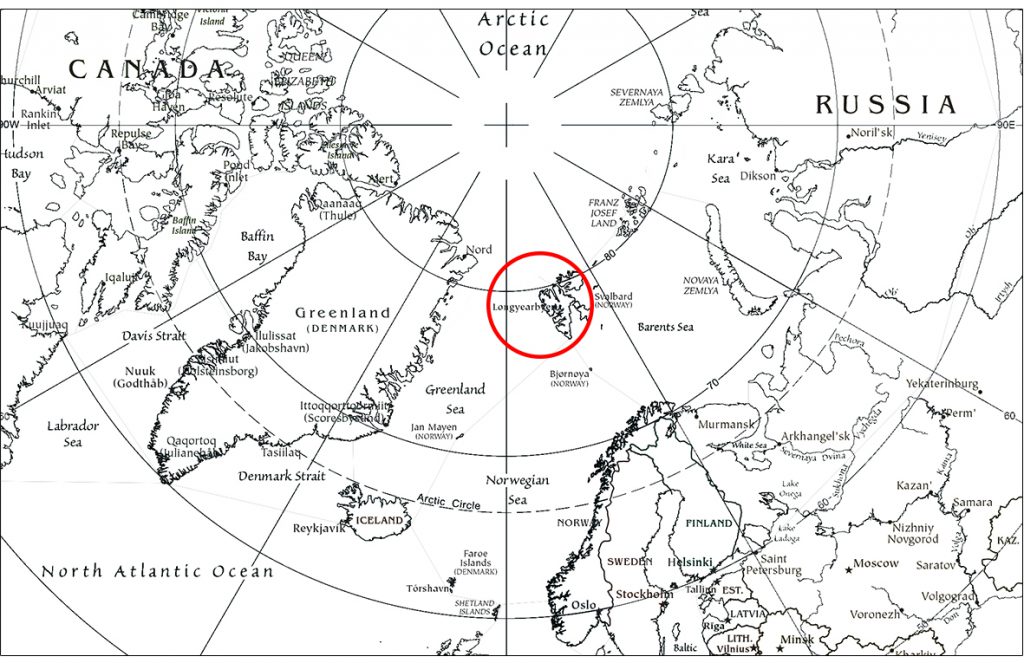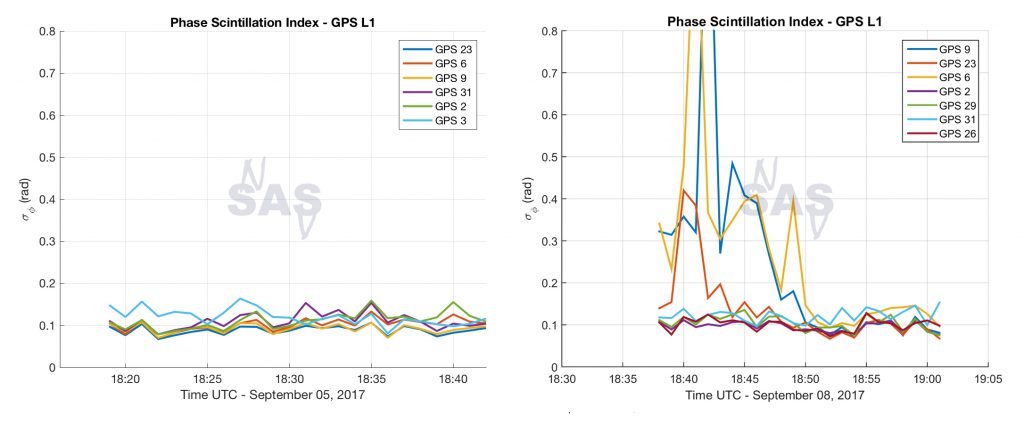NavSAS next to the North Pole
On September 8th 2017, a remarkable amount of energy coming from a solar flare hits the atmosphere causing severe fluctuations in the magnetic fields and increasing the ionization of the ionosphere. The NavSAS research group from Politecnico di Torino (Italy), observed interesting events from the Sousy Radar Station in Adventdalen, Longyearbyen (Svalbard). Thanks to the collaboration with INGV (Istituto Nazionale di Geofisica e Vulcanologia, Italy) and UiT (University of Tromso, Norway), highly unique data about ionospheric scintillations have been recorded by means of Global Navigation Satellite System (GNSS) radio signals.
On Sunday 3 September, few days before the ESA/JRC Summer School on GNSS 2017, we started the data collection in Adventdalen [78°10’10.05″N, 15°59’33.32″E), an isolated valley located at about 12 kilometers from the city of Longyearbyen in Spitsbergen (main island belonging to the Svalbard archipelago, Norway).

Thanks to the scientific and logistic support of Vincenzo Romano and Lucilla Alfonsi from INGV (Istituto Nazionale di Geofisica e Vulcanologia), Chris Hall from UiT (University of Tromso) and Stefano Poli (Poli Arctici), we installed an automatic grabbing system based on an SDR USRP front-end and on a Matlab GNSS Receiver developed by NavSAS group, by exploiting the GNSS antenna installed for the ISACCO project (Ionospheric Scintillations Arctic Campaign Coordinated Observations) hosted by University of Tromso at the Sousy Svalbard Radar (SSR) infrastructure.

The figures reported show the trend over time of the phase scintillation index, which is typically computed at the receiver tracking output to assess the fluctuation of the phase of the received GNSS signal, and in turn the impact of ionospheric scintillations. The comparison between the two plots outlines a significant increase of the phase scintillation.
Updates – 10th September 2018
New results from the investigation on Svalbard datasets have been published on AGU Space Weather. The open-access article “Effects of Phase Scintillation on the GNSS Positioning Error During the September 2017 Storm at Svalbard” is available here.
Updates – 3rd October 2018
Nicola Linty, researcher at Department of Electronics and Telecommunications of Politecnico di Torino and member of NavSAS research group received the prestigious Best Presentation Award at the ION GNSS+ 2018, the most relevantinternational conference on Global Navigation Satellite Systems. He presented the paper “Investigation into the Space Weather Event of September 2017 through GNSS Raw Samples Processing” co-authored by Alex Minetto, Vincenzo Romano e Ingrid Hunstad under the supervision of Professor Fabio Dovis. The paper will be available soon within the proceedings of the conference.
News on the Politecnico Website here.